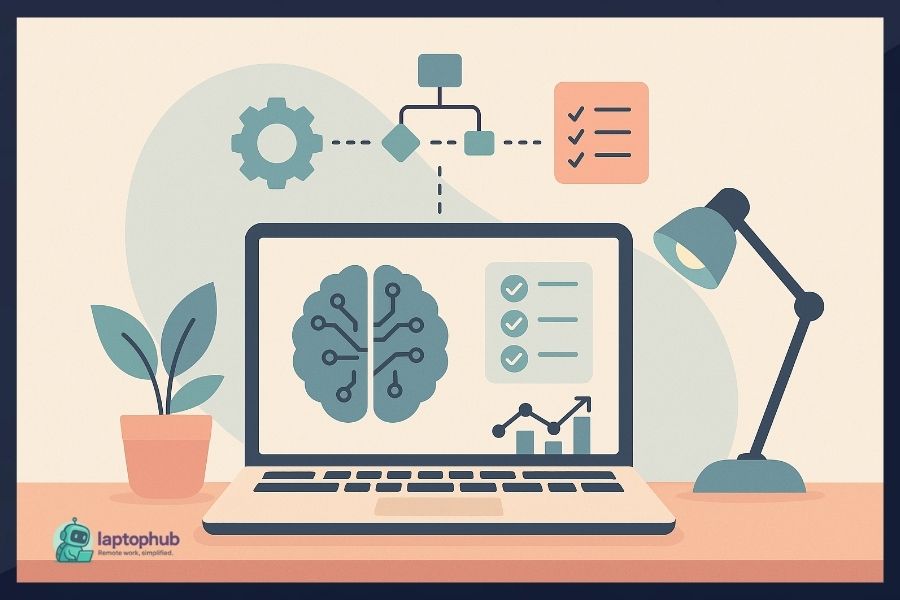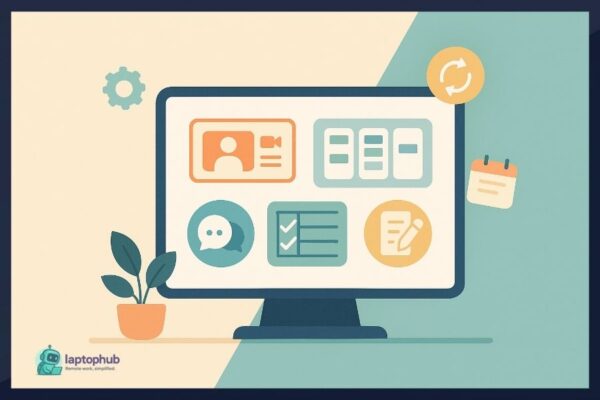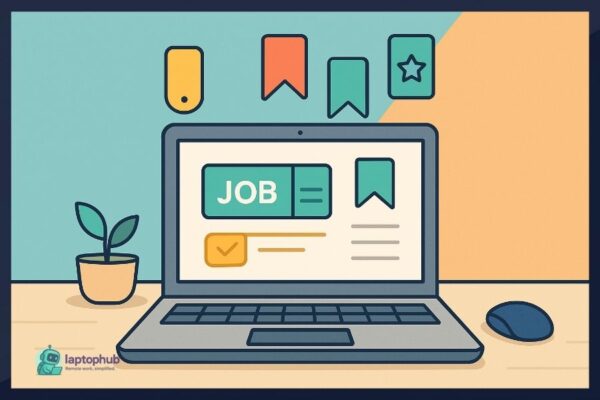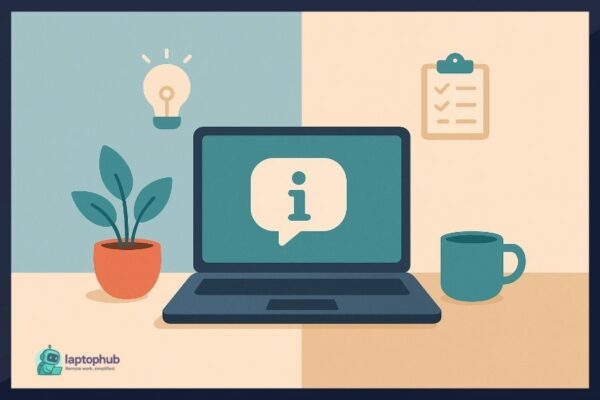Remote work isn’t just a trend anymore—it’s become a permanent way of working for millions. Whether you’re a freelancer, a startup founder, or part of a massive remote team, chances are you’ve already bumped into AI somewhere in your workflow.
But here’s the kicker—AI isn’t just helping. It’s completely changing the game.
Smart tools are doing everything from scheduling meetings to managing projects, and even checking your emotional well-being. Sounds futuristic? AI for remote work is already happening.
💡Key takeaways:
- AI enhances productivity by automating routine tasks and simplifying workflows.
- Communication and collaboration tools powered by AI keep remote teams connected and synchronized.
- Smart tools provide personalized assistance and scheduling, improving focus and time management.
- AI ensures security and data privacy while supporting scalable growth for remote teams.
The Benefits of AI in Remote Work
Streamlining Communication
Tired of miscommunication or long email threads? AI tools now summarize, translate, and clarify messages so everyone’s on the same page—literally.
Reducing Manual Workload
Why waste time on repetitive tasks when AI can handle it? Automating the small stuff frees up mental space for real thinking and strategy.
Boosting Team Productivity
AI tracks your patterns and nudges you at the right time. Think of it like having a mini-coach quietly watching your progress and cheering you on (without being annoying).
Enhancing Employee Experience
From smart surveys to mental health check-ins, AI is making remote work feel a lot more human—even though it’s driven by machines.
Popular AI Tools for Remote Workers
The rise of AI-powered tools has changed how remote workers handle their daily responsibilities. Whether you’re managing emails, collaborating with teams, or setting schedules, there’s likely an AI tool designed to help.
Virtual Assistants & Productivity Planners
These AI tools help automate your daily planning, manage time, and optimize your productivity.
- Clockwise – Reschedules meetings and protects focus time automatically.
- Reclaim.ai – Balances meetings, habits, and tasks with smart calendar syncing.
- Motion – AI-powered planner that rearranges your daily schedule for efficiency.
Writing Assistants & Content Creation
Need help with writing, editing, or creating marketing content? These tools have you covered.
- Copy.ai – Helps you whip up marketing copy, product descriptions, and emails.
- Grammarly – AI writing assistant that checks grammar, clarity, and tone.
- Jasper AI – Great for writing blogs, ads, and social media content in seconds.
Note-Taking & Documentation
Organize thoughts, tasks, and collaborative documents using smart AI-driven systems.
- Notion AI – Combines note-taking, task management, and AI assistance.
- Trello + Butler Automation – Visual task board with automation for workflows.
Transcription & Meeting Notes
Perfect for remote meetings—these tools capture every word and turn them into useful insights.
- Otter.ai – Real-time transcription and smart meeting summaries.
- Fireflies.ai – Automatically records, transcribes, and highlights key moments in meetings.
- Zoom AI Companion – Summarizes Zoom calls and provides actionable takeaways.
Noise Cancellation & Call Enhancement
For those chaotic remote work environments, these AI tools clean up your call quality.
- Krisp – Cancels background noise so your voice stays crystal clear.
Email & Inbox Management
Stop drowning in email. These AI helpers make your inbox manageable again.
- SaneBox – Filters distractions, organizes emails, and summarizes long threads.
All-Around AI Support
Flexible tools that can handle a wide range of tasks—great for brainstorming, research, and general productivity.
- ChatGPT – The all-in-one AI assistant for ideas, research, coding help, and more.
These tools aren’t just luxuries—they’re now essentials for remote workers who want to stay ahead without burning out.
How AI Improves Communication in Remote Teams
One of the toughest challenges for remote teams? Communication. When you’re not sitting in the same room, you need tech that can bridge the distance—and that’s where AI steps in.
1. Real-Time Translation – AI tools like Google Meet or Microsoft Teams now offer live translation during calls. This breaks down language barriers instantly, which is a huge win for global teams.
2. Smart Summaries & Meeting Insights – Tools like Otter.ai or Fireflies.ai not only record meetings, they also generate action points and summaries. So even if someone joins late or skips a call, they can still catch up in minutes.
3. AI-Powered Chatbots – Many companies are using internal AI bots within Slack or Microsoft Teams to answer frequently asked questions, guide team members, or automate basic tasks like setting reminders and sharing docs.
4. Tone Detection and Sentiment Analysis – Some AI writing assistants (like Grammarly or Crystal) help team members write more empathetic messages. They pick up on tone and suggest tweaks to make communication clearer, friendlier, or more persuasive.
5. Predictive Typing and Smart Replies – In email clients and messaging apps, AI speeds up communication with suggested responses and auto-complete features. It’s a small thing, but those seconds saved really add up over time.
By making conversations faster, more inclusive, and less prone to miscommunication, AI strengthens the glue that holds remote teams together.
AI and Project Management
Predictive Analytics
AI predicts task completion times based on historical data. It’s like having a crystal ball for your deadlines.
Auto-Prioritization of Tasks
Some AI tools re-arrange your to-do list based on what matters most. Less thinking, more doing.
Smart Nudges
“Hey, your deadline’s coming up!” These reminders keep you on track without feeling like micromanagement.
AI in HR and Employee Wellbeing
Chatbots for Support
Got questions about leave or company policies? AI chatbots answer instantly, without the HR team needing to lift a finger.
Mental Health Monitoring
Some tools can analyze text inputs or activity to suggest when someone might need a break or mental health support.
Personalized Learning
AI can recommend upskilling courses based on your work habits and performance. Lifelong learning, turbocharged.
Security and Data Protection with AI
Threat Detection
AI monitors systems 24/7 and flags unusual activity before it becomes a full-blown threat.
Role-Based Access
Want to control who sees what? AI-driven tools ensure the right people access the right data—nothing more, nothing less.
Behavior Monitoring
AI can spot unusual employee behavior that might indicate burnout or risky habits, and alert management before issues snowball.
Challenges of Using AI in Remote Work
AI brings a ton of benefits, but it’s not without its hiccups. If you’re planning to lean on AI for remote work, it helps to be aware of the common bumps in the road.
1. Data Privacy & Security Risks – When AI tools handle sensitive info—like customer data or internal communications—there’s always the risk of data leaks or breaches. Not all tools meet the same security standards, and users must stay informed.
2. Over-Automation – Relying too heavily on AI can backfire. If too much is automated, the human touch gets lost. Emails may feel robotic, and creative work can suffer. AI should support, not replace, authentic interaction and judgment.
3. Learning Curve – Not all team members are tech-savvy. Some tools have steep learning curves, and introducing too many AI apps at once can cause confusion, frustration, or even resistance from staff.
4. Cost – While some AI tools are free or freemium, premium plans can add up—especially for growing teams. Balancing budget with value is critical when adopting new tech.
5. AI Bias & Inaccuracy – Sometimes AI tools produce errors or biased results, especially in writing or decision-making processes. Human oversight is still essential to catch mistakes and ensure fairness.
AI is powerful, but it’s not magic. Knowing these limitations helps businesses use it wisely and sustainably.
The Future of AI in Remote Work
Hyper-Personalized Workflows
AI will learn your unique work style and tailor tools specifically to you. Think: a workday designed just for your brain.
AI Agents as Teammates
We’re heading toward AI agents that don’t just assist—they collaborate, brainstorm, and execute tasks. Creepy? Maybe. Useful? Absolutely.
Ethical Considerations
As AI grows, so does the need for transparency, fairness, and ethical decision-making. This part is just getting started.
Tips for Integrating AI into Remote Work
Want to bring AI into your remote workflow smoothly? Follow these tried-and-true strategies to make the transition easier for you and your team.
1. Start Small – Don’t overhaul your entire system overnight. Introduce one tool at a time and see how it fits. For example, start with Grammarly for writing or Otter.ai for meetings before branching out.
2. Get Team Buy-In – Involve your team in the process. Ask what tasks are slowing them down and look for AI tools that target those pain points. When people feel heard, they’re more open to trying something new.
3. Train and Support – Offer mini training sessions or how-to videos. Some tools also provide onboarding support or tutorials. Make it easy for everyone to get up to speed without feeling overwhelmed.
4. Focus on High-Impact Areas – Use AI where it makes the biggest difference: automating repetitive tasks, speeding up writing, or organizing calendars. These small wins free up time and boost morale.
5. Monitor and Adjust – After a few weeks, check in. What’s working? What’s not? Be ready to pivot. AI is constantly evolving, and so should your approach.
6. Combine Human + AI Efforts – AI is best when it works with humans, not instead of them. Let your team handle creativity, empathy, and decision-making, while AI tackles the busy work.
By integrating AI step-by-step and keeping people at the center, you’ll create a remote work environment that’s not just smarter—but also more human.
AI for Remote Work FAQs
1. What is the best AI tool for remote workers?
It depends on your role, but tools like Motion for task management and Otter.ai for meetings are solid picks.
2. Is AI replacing remote jobs?
Not really. AI is more about assisting than replacing. It automates the boring stuff so you can focus on real work.
3. How can I make my team adopt AI tools?
Start small, show them the time saved, and give proper training. Change takes time.
4. Are AI tools safe to use with sensitive data?
Most reputable tools follow strict security protocols, but always read the fine print and use encryption where possible.
5. Will AI tools get more advanced in the future?
Absolutely. Expect smarter, more intuitive, and even emotionally aware AI within the next few years.
Final thoughts
AI isn’t coming—it’s already here. And if you’re working remotely, you’ve got two choices: use it to your advantage or get left behind. Whether you’re looking to improve productivity, streamline communication, or simply make life easier, smart AI tools are the secret weapon remote workers didn’t know they needed—until now.




